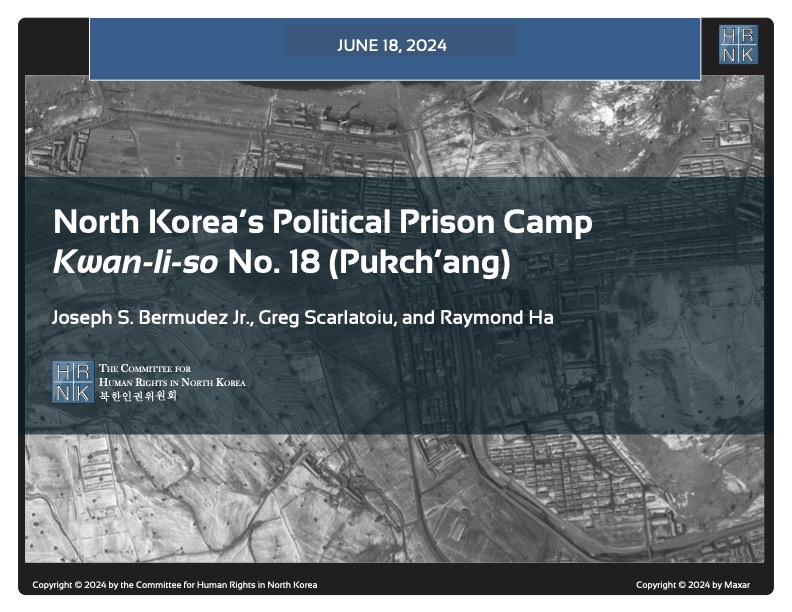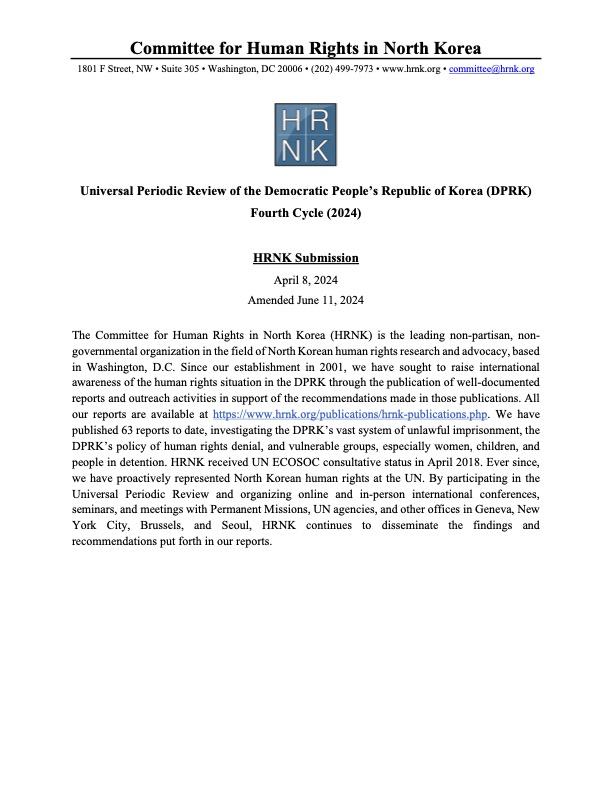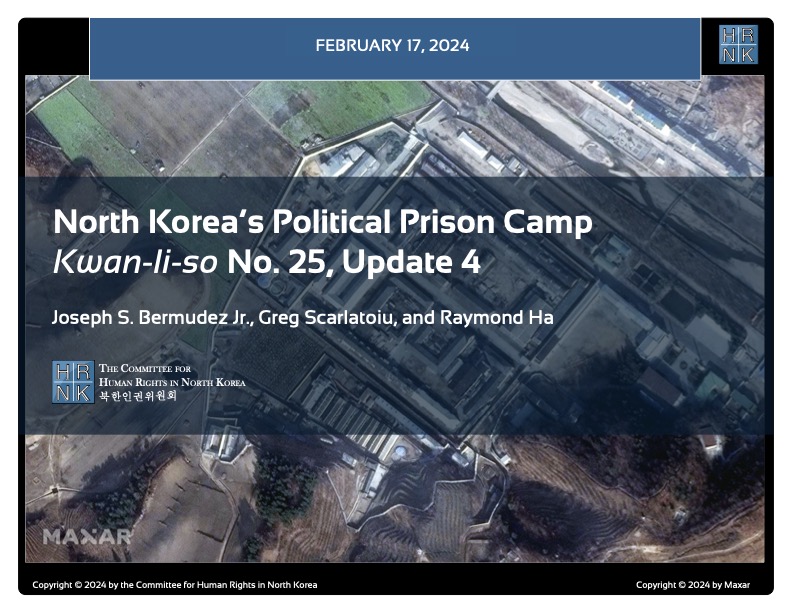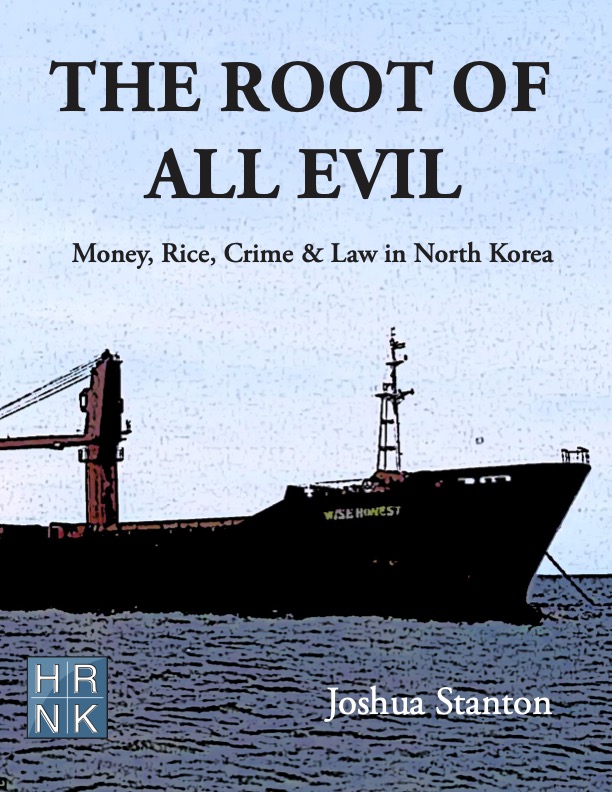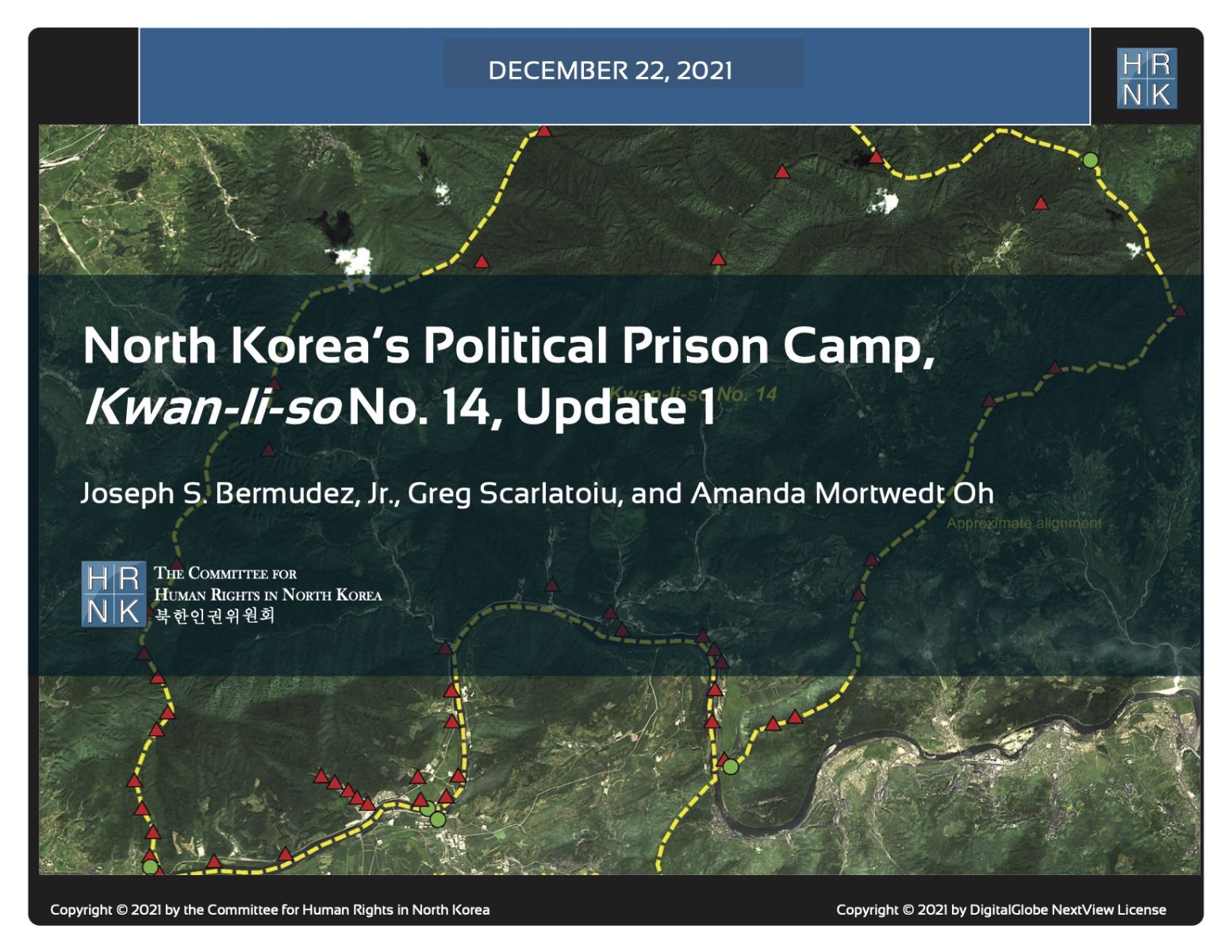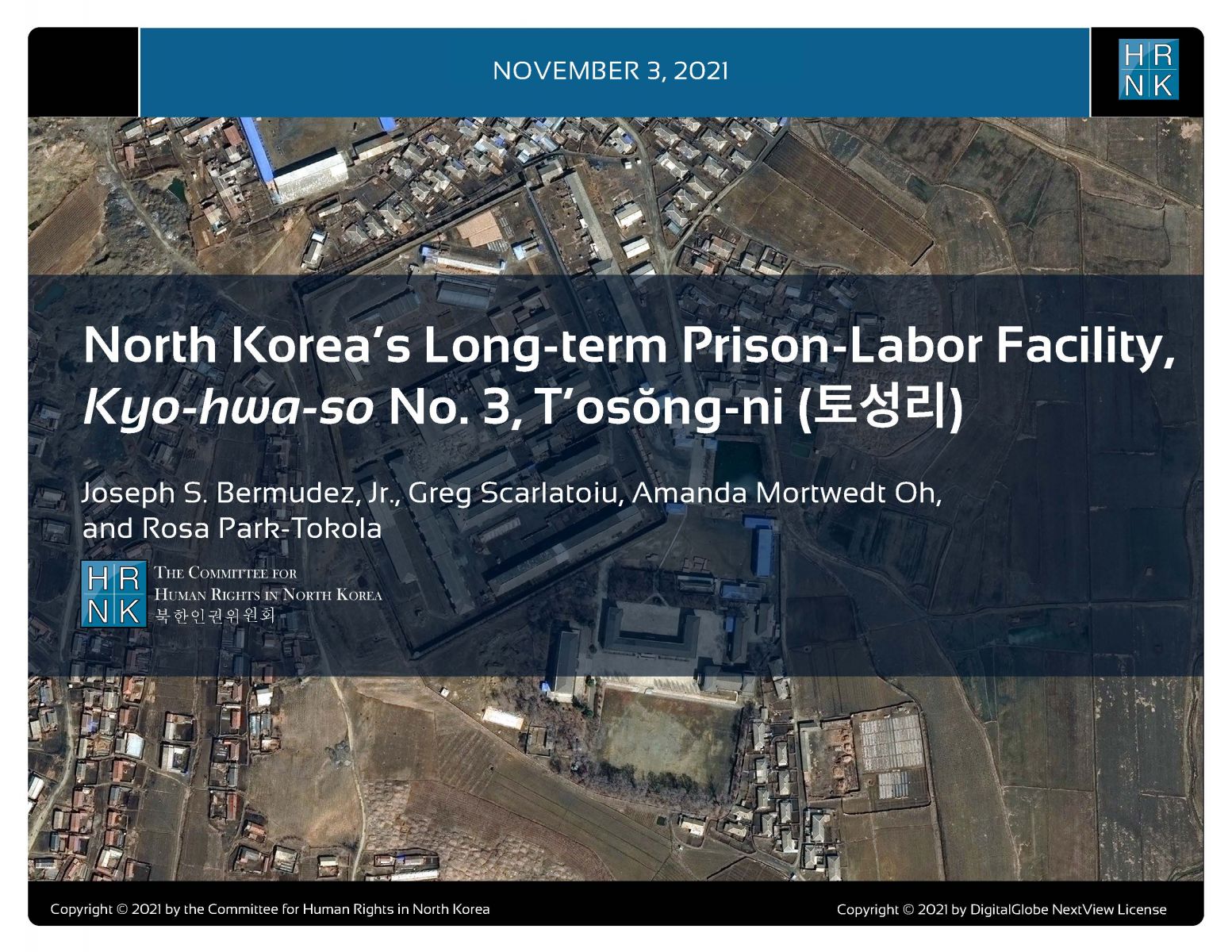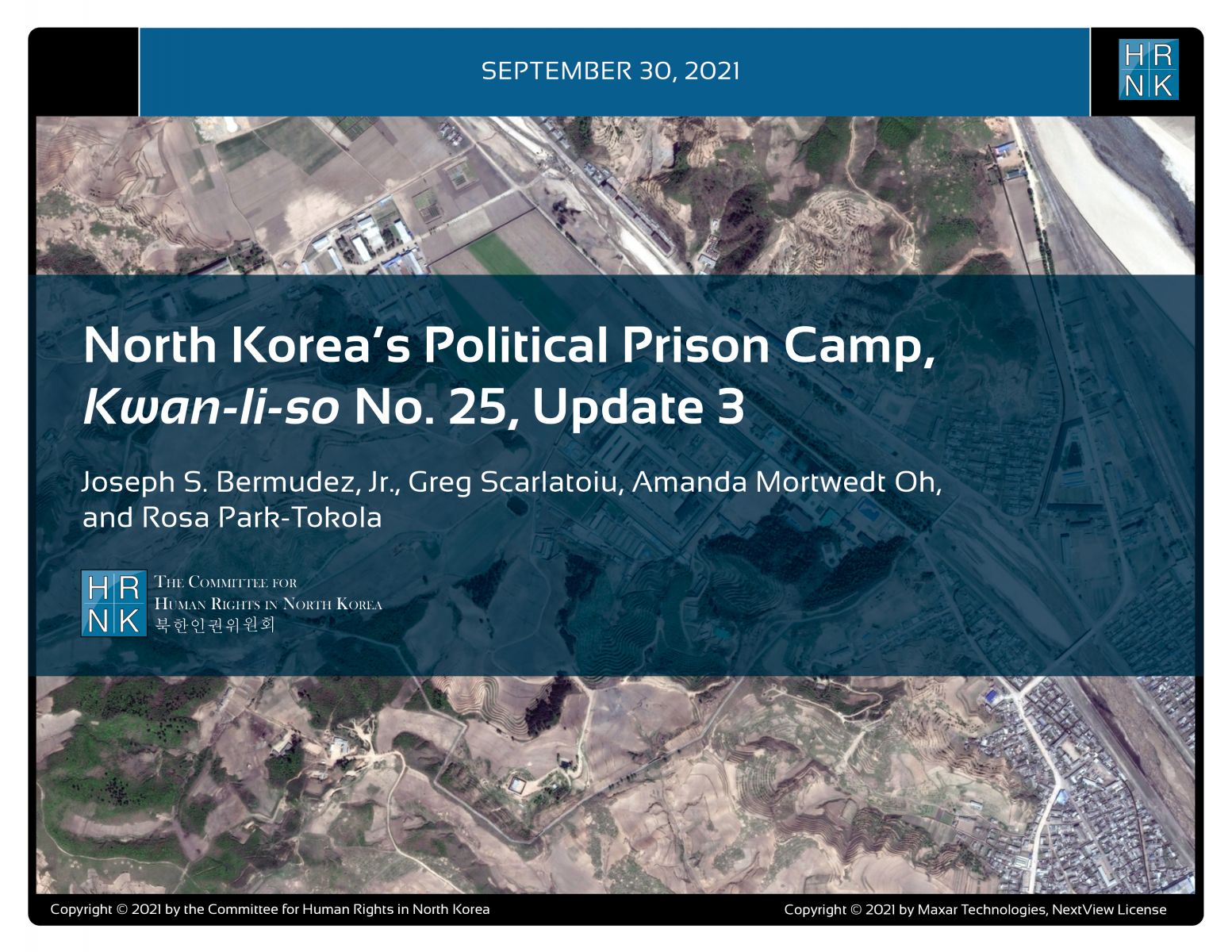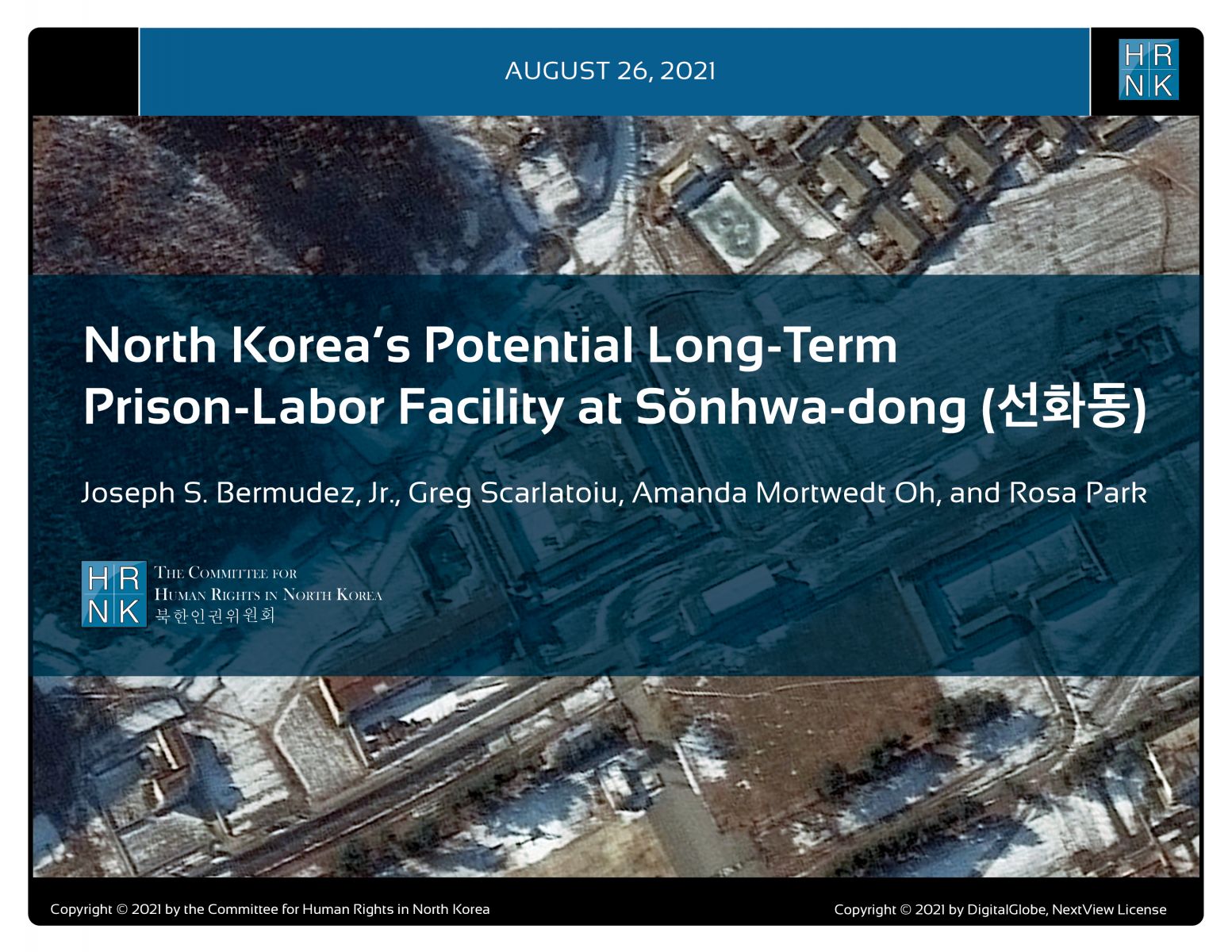.jpg)
North Korean House of Cards: Leadership Dynamics Under Kim Jong-un
Ken E. Gause
Oct 30, 2015

The Hidden Gulag IV: Gender Repression and Prisoner Disappearances
David Hawk
Sep 18, 2015
David Hawk has authored the fourth edition of The Hidden Gulag and has discovered gender repression and prisoner double disappearances in the political prison camps of North Korea. Read the full publication for more information on his interviews with former political prisoners.

Imagery Analysis of Camp 15 “Yodŏk” Closure of the “Revolutionizing Zone”
Joseph S. Bermudez Jr., Andy Dinville, and Mike Eley
Sep 18, 2015
Embargoed until 9:00a.m. EST Friday, September 18
HRNK and AllSource Analysis have worked together to give you an updated satellite imagery analysis of one of the political prison camps in North Korea, Camp 15. Together, HRNK and ASA have discovered the closure of the "Revolutionizing Zone."
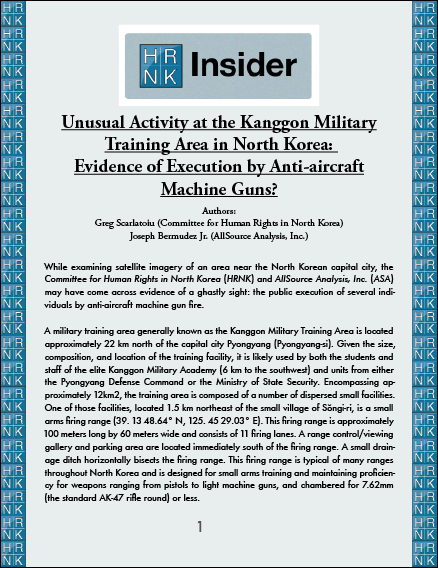
Unusual Activity at the Kanggon Military Training Area in North Korea: Evidence of Execution by Anti-aircraft Machine Guns?
Greg Scarlatoiu and Joseph Bermudez, Jr.
Apr 29, 2015
While examining satellite imagery of an area near the North Korean capital city, the Committee for Human Rights in North Korea (HRNK) and AllSource Analysis, Inc. (ASA) may have come across evidence of a ghastly sight: the public execution of several individuals by anti-aircraft machine gun fire.
Please click here to read more.
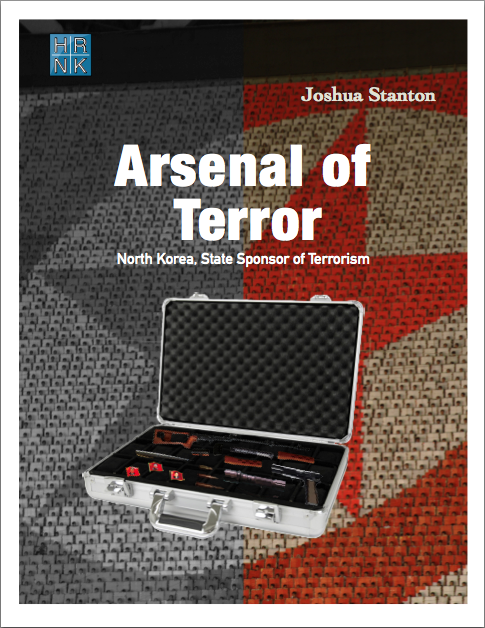
Arsenal of Terror: North Korea, State Sponsor of Terrorism
Joshua Stanton
Apr 27, 2015
On April 27, 2015, HRNK released their report, Arsenal of Terror: North Korea, State Sponsor of Terrorism by Joshua Stanton at the National Press Club in Washington, D.C. Please click here to view the press release.
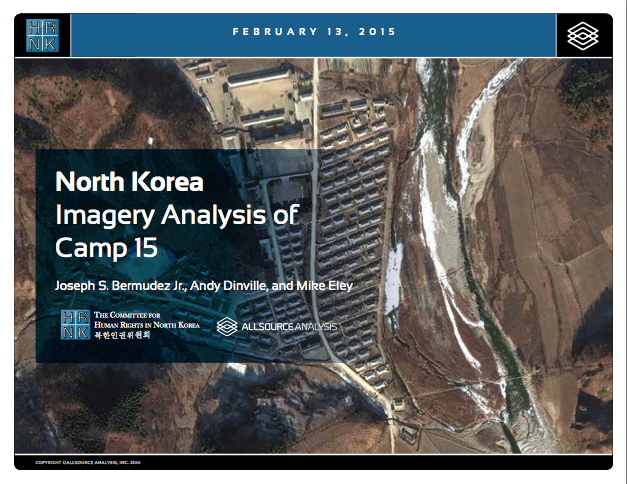
North Korea: Imagery Analysis of Camp 15
Joseph S. Bermudez Jr., Andy Dinville, and Mike Eley
Feb 17, 2015
As part of a joint undertaking with the Committee for Human Rights in North Korea (HRNK) to use satellite imagery
to shed light on human suffering in the Democratic People’s Republic of Korea (DPRK, more commonly known as North Korea, AllSource Analysis has been mon- itoring activity at political prison facilities throughout North Korea. This report details activity at the facility commonly known as Camp 15.
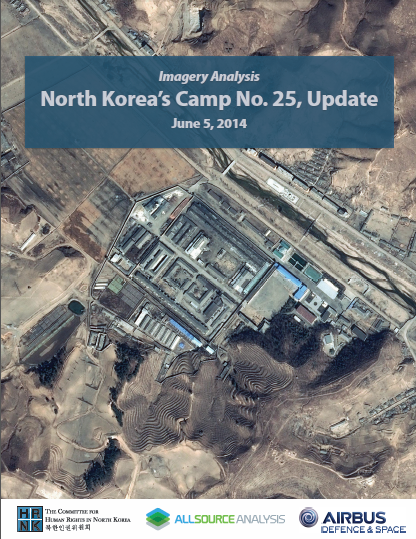
North Korea's Camp No. 25 Update
Joseph S. Bermudez Jr.
Jun 05, 2014
As part of a joint undertaking with the Committee for Human Rights in North Korea (HRNK) to use satellite imagery to shed light on human suffering in North Korea AllSource Analysis (ASA) has been monitoring activity at political prison facilities in the Democratic People’s Republic of Korea (DPRK, more commonly known as North Korea).
This report covers activity observed during the past 12 months at the facility commonly known as Kwan-li-so No. 25 (Political Prison Camp No. 25) and updates HRNK’s February 2013 report on the same subject.
For this report, ASA undertook an imagery analysis of Camp No. 25 and its environs using a 50 cm pansharpened multispectral satellite image collected by Airbus Defense and Space (Airbus) on March 22, 2014.
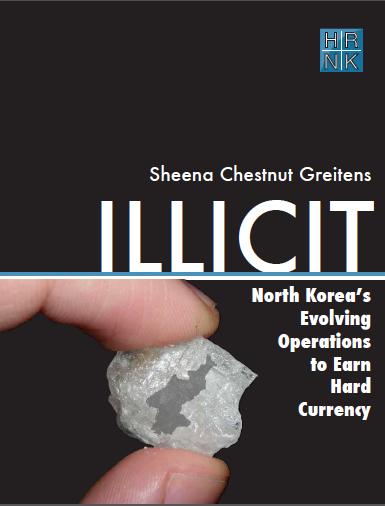
Illicit: North Korea's Evolving Operations to Earn Hard Currency
Sheena Chestnut Greitens
Apr 15, 2014
In Illicit: North Korea’s Evolving Operations to Earn Hard Currency, Sheena Chestnut Greitens provides a detailed and thoroughly researched account of the role of illicit activities in the North Korean economy. A central conclusion of Chestnut Greitens’ analysis is that in the context of eroding state control over the licit aspects of the economy, illicit activities are also being “privatized” by North Korea’s elite. As HRNK Co-chair and former USAID Administrator Andrew Natsios puts it, Chestnut Greitens’ report provides “evidence that a market economy is developing in North Korea, in this case a criminal one that is feeding off the suffering and deprivation of the population. The report is about the absence of the rule of law on a grand scale in North Korea and in a way that criminal activity is now being privatized. It is very useful in understanding the perverse transformation of the country going on right now.”
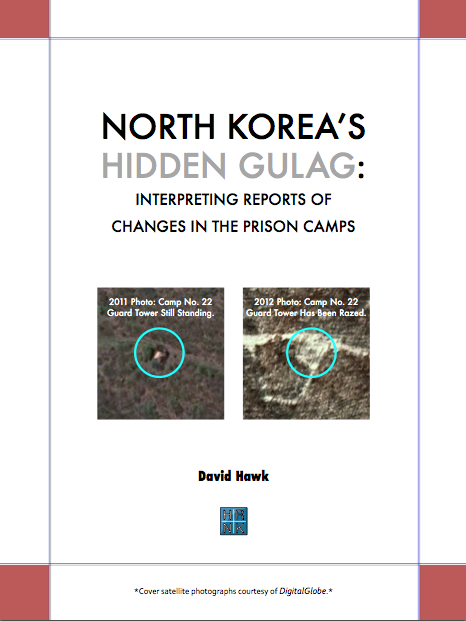
North Korea's Hidden Gulag: Interpreting Reports of Changes in the Prison Camps
David Hawk
Aug 27, 2013
David Hawk interprets reports of changes in North Korea's political prison camps in his most recent report, North Korea's Hidden Gulag: Interpreting Reports of Changes in the Prison Camps. Please view the press release here.

UPDATED: The North Korea Police State: Second Edition
Ken Gause
May 29, 2013
The newest version of Coercion, Control, Surveillance, and Punishment: An Examination of the North Korea Police State by Ken Gause, updated on May 24, 2013.
This is the first satellite imagery report by HRNK on a long-term political prison commonly identified by researchers and former detainees as Kwan-li-so No. 18 (Pukch'ang). This report was concurrently published on Tearline at https://www.tearline.mil/public_page/prison-camp-18.
To understand the challenges faced by the personnel who are involved in North Korea’s nuclear program, it is crucial to understand the recruitment, education, and training processes through the lens of human rights. This report offers a starting point toward that understanding. North Korea’s scientists and engineers are forced to work on the nuclear weapons program regardless of their own interests, preferences, or aspirations. These individuals may be described as “moder
In this submission, HRNK focuses its attention on the following issues in the DPRK: The status of the system of detention facilities, where a multitude of human rights violations are ongoing. The post-COVID human security and human rights status of North Korean women, with particular attention to sexual and gender-based violence (SGBV). The issue of Japanese abductees and South Korean prisoners of war (POWs), abductees, and unjust detainees.
This report provides an abbreviated update to our previous reports on a long-term political prison commonly identified by former prisoners and researchers as Kwan-li-so No. 25 by providing details of activity observed during 2021–2023. This report was originally published on Tearline at https://www.tearline.mil/public_page/prison-camp-25.
This report explains how the Kim regime organizes and implements its policy of human rights denial using the Propaganda and Agitation Department (PAD) to preserve and strengthen its monolithic system of control. The report also provides detailed background on the history of the PAD, as well as a human terrain map that details present and past PAD leadership.
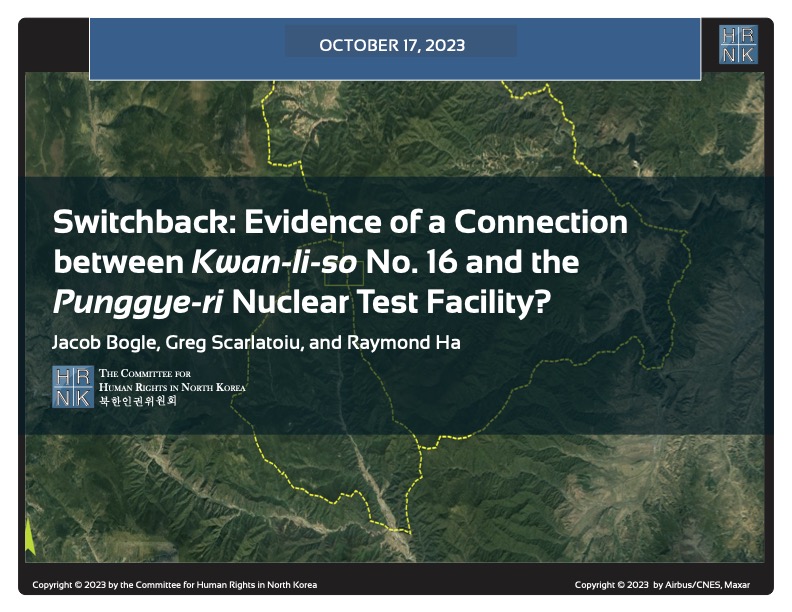
HRNK's latest satellite imagery report analyzes a 5.2 km-long switchback road, visible in commercial satellite imagery, that runs from Testing Tunnel No. 1 at North Korea's Punggye-ri nuclear test facility to the perimeter of Kwan-li-so (political prison camp) no. 16.
This report proposes a long-term, multilateral legal strategy, using existing United Nations resolutions and conventions, and U.S. statutes that are either codified or proposed in appended model legislation, to find, freeze, forfeit, and deposit the proceeds of the North Korean government's kleptocracy into international escrow. These funds would be available for limited, case-by-case disbursements to provide food and medical care for poor North Koreans, and--contingent upon Pyongyang's progress
For thirty years, U.S. North Korea policy have sacrificed human rights for the sake of addressing nuclear weapons. Both the North Korean nuclear and missile programs have thrived. Sidelining human rights to appease the North Korean regime is not the answer, but a fundamental flaw in U.S. policy. (Published by the National Institute for Public Policy)
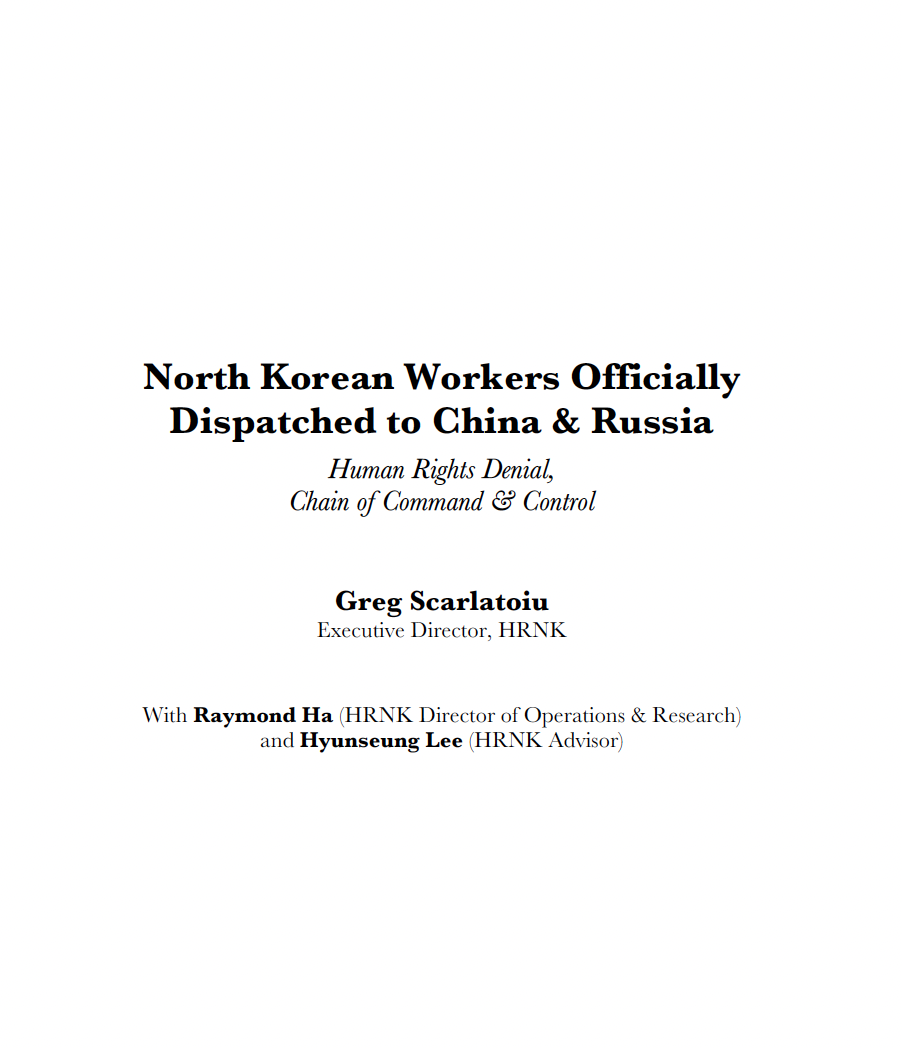
North Korea’s forced labor enterprise and its state sponsorship of human trafficking certainly continued until the onset of the COVID pandemic. HRNK has endeavored to determine if North Korean entities responsible for exporting workers to China and Russia continued their activities under COVID as well.
George Hutchinson's The Suryong, the Soldier, and Information in the KPA is the second of three building blocks of a multi-year HRNK project to examine North Korea's information environment. Hutchinson's thoroughly researched and sourced report addresses the circulation of information within the Korean People's Army (KPA). Understanding how KPA soldiers receive their information is needed to prepare information campaigns while taking into account all possible contingenc
This report is part of a comprehensive long-term project undertaken by HRNK to use satellite imagery and former prisoner interviews to shed light on human suffering in North Korea by monitoring activity at political prison facilities throughout the nation. This is the second HRNK satellite imagery report detailing activity observed during 2015 to 2021 at a prison facility commonly identified by former prisoners and researchers as “Kwan-li-so No. 14 Kaech’ŏn” (39.646810, 126.117058) and
This report is part of a comprehensive long-term project undertaken by HRNK to use satellite imagery and former prisoner interviews to shed light on human suffering in North Korea by monitoring activity at civil and political prison facilities throughout the nation. This study details activity observed during 1968–1977 and 2002–2021 at a prison facility commonly identified by former prisoners and researchers as "Kyo-hwa-so No. 3, T'osŏng-ni" and endeavors to e
This report is part of a comprehensive long-term project undertaken by HRNK to use satellite imagery and former detainee interviews to shed light on human suffering in the Democratic People’s Republic of Korea (DPRK, more commonly known as North Korea) by monitoring activity at political prison facilities throughout the nation. This report provides an abbreviated update to our previous reports on a long-term political prison commonly identified by former prisoners and researchers as Kwan-li-so
Through satellite imagery analysis and witness testimony, HRNK has identified a previously unknown potential kyo-hwa-so long-term prison-labor facility at Sŏnhwa-dong (선화동) P’ihyŏn-gun, P’yŏngan-bukto, North Korea. While this facility appears to be operational and well maintained, further imagery analysis and witness testimony collection will be necessary in order to irrefutably confirm that Sŏnhwa-dong is a kyo-hwa-so.
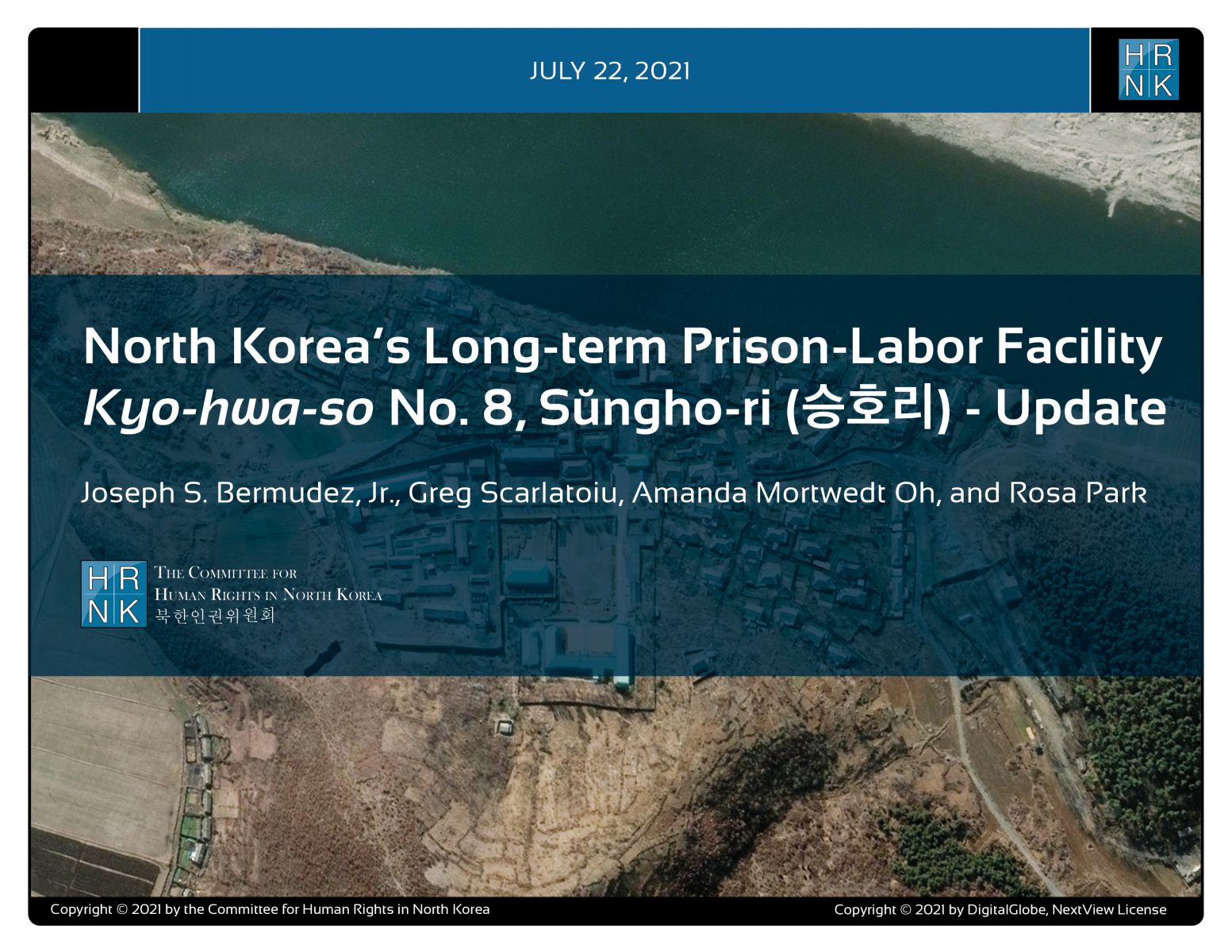
"North Korea’s Long-term Prison-Labor Facility Kyo-hwa-so No. 8, Sŭngho-ri (승호리) - Update" is the latest report under a long-term project employing satellite imagery analysis and former political prisoner testimony to shed light on human suffering in North Korea's prison camps.
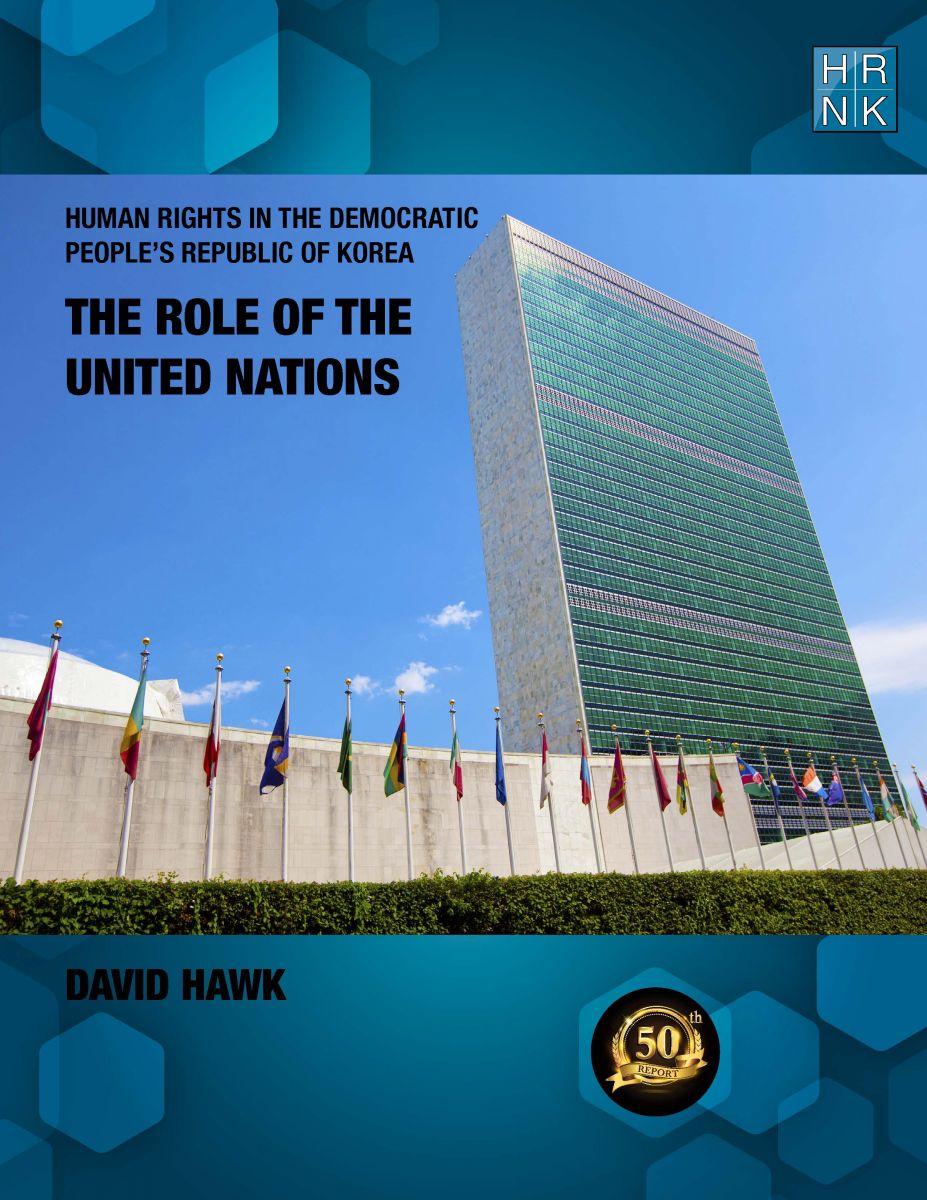
Human Rights in the Democratic Republic of Korea: The Role of the United Nations" is HRNK's 50th report in our 20-year history. This is even more meaningful as David Hawk's "Hidden Gulag" (2003) was the first report published by HRNK. In his latest report, Hawk details efforts by many UN member states and by the UN’s committees, projects and procedures to promote and protect human rights in the DPRK. The report highlights North Korea’s shifts in its approach
South Africa’s Apartheid and North Korea’s Songbun: Parallels in Crimes against Humanity by Robert Collins underlines similarities between two systematically, deliberately, and thoroughly discriminatory repressive systems. This project began with expert testimony Collins submitted as part of a joint investigation and documentation project scrutinizing human rights violations committed at North Korea’s short-term detention facilities, conducted by the Committee for Human Rights
